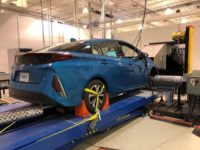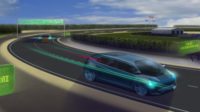TORONTO—Traditionally, most autonomous vehicles have been tested in warm-weather locales, such as Arizona, California and Texas. But, a new initiative at the University of Toronto aims to make Canada a hot spot for testing AVs in wintry conditions.
WinTOR: Autonomous Driving in Adverse Conditions is a new collaboration that aims to transform Ontario into a global hub for R&D related to autonomous driving in winter. Corporate partners in the effort include General Motors and LG Electronics.
“Winter conditions aggravate the remaining challenges in autonomous driving,” explains Steven Waslander, an associate professor at the Institute for Aerospace Studies at the University of Toronto. “Reduced visibility limits perception performance, and slippery road surfaces are a big challenge for vehicle control.”
To drive safely in all conditions, including winter, Waslander says AVs need to fully observe their surroundings, despite limits to their sensor range, to get advanced warning of challenging situations and to react quickly to changing conditions.
Last year, Waslander and his colleagues published the Canadian Adverse Driving Conditions dataset. Created using the Autonomoose, a self-driving vehicle designed by Waslander and his team, the open-source data record real winter driving conditions on roads in southwestern Ontario. The data is already being used by researchers from around the world to train new AI software.
The WinTOR project is divided into three broad themes:
*Sensor filtering for object detection. New ways of analyzing the data from sensors, such as visual cameras, radar and lidar, will help to separate the signals that represent real objects from the noise caused by falling or blowing snow. Strategies will include both preprocessing techniques and improved artificial intelligence algorithms trained to be aware of the limits of their own performance.
*Sensor fusion, localization and tracking. While today’s self-driving cars can reliably determine where they are in relation to their surroundings, the techniques they use begin to break down under adverse driving conditions. The engineers will leverage new algorithmic strategies in vision and lidar registration, as well as new sensing options, such as ground-penetrating and automotive radar, to make localization algorithms more resilient in adverse conditions.
*Prediction, planning and control. AVs will need to change the way they drive in response to winter hazards. For example, they might take a slightly different path to avoid a snowdrift or slow down when driving over a section of road that their sensors have perceived as particularly slippery. They will learn the implications of adverse weather on the vehicles around them and be able to assess the increased uncertainty of outcomes, enabling them to plan actions that can be executed reliably in winter conditions.



